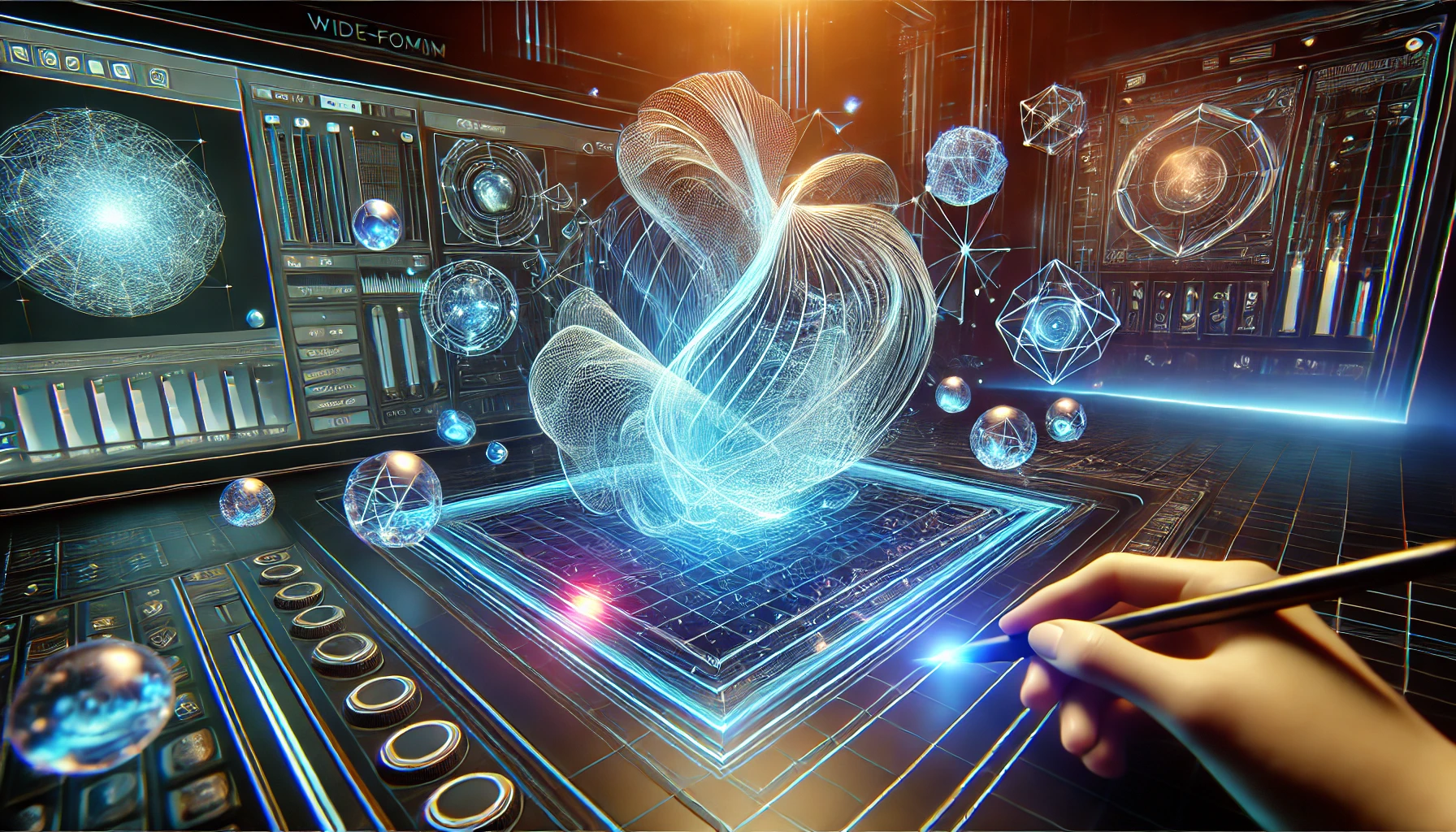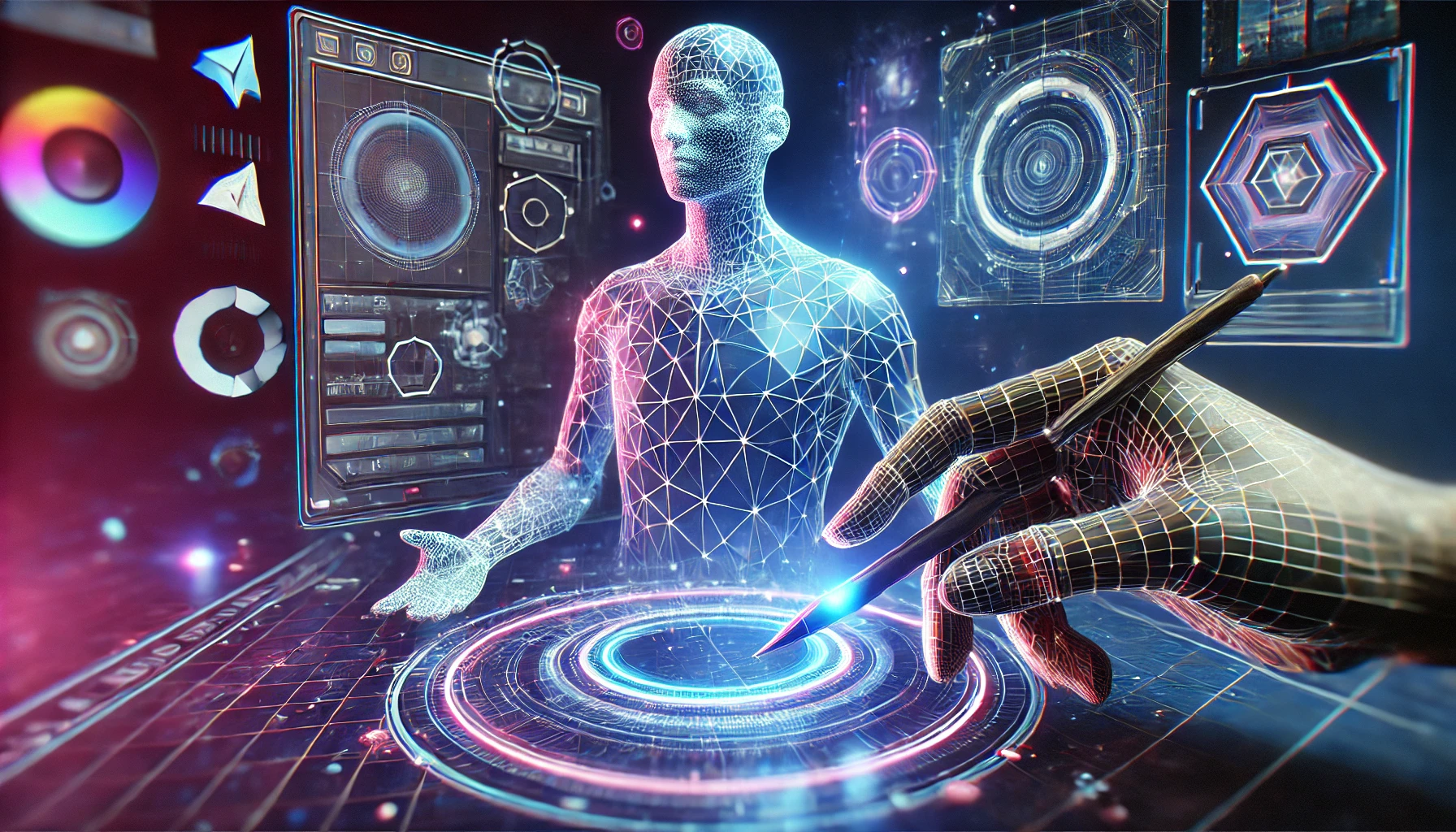
Mastering Blender: How to Edit Mesh from 3D AI Modeling with Tripo
In the world of 3D modeling, Blender has emerged as one of the most powerful and popular tools for artists, designers, and animators. Whether you're a beginner or an experienced user, understanding how to edit mesh from 3D AI modeling in Blender can significantly enhance your workflow and expand your creative possibilities. This article will guide you through the process of editing mesh generated by AI-powered 3D modeling tools, such as Tripo, and how to refine your 3D creations with precision and ease.

What is 3D AI Modeling?
3D AI modeling refers to the use of artificial intelligence algorithms to generate 3D models automatically. AI-powered tools can create highly detailed and accurate models based on minimal input, such as sketches, images, or even text descriptions. This technology accelerates the 3D modeling process, making it more accessible to both professionals and hobbyists.
One such platform that is revolutionizing AI 3D modeling is Tripo. Tripo is an AI-driven 3D model generator that allows users to create customizable 3D models with ease. With Tripo, users can generate high-quality 3D assets quickly, and then refine and customize them in tools like Blender for detailed adjustments.
Once a model is generated using Tripo, it often needs some tweaking to meet specific design requirements. This is where Blender, with its comprehensive set of modeling tools, comes into play. With Blender, you can easily import AI-generated models and refine the mesh to fit your vision, whether you're working on a game, animation, or product prototype.
Why Use Blender to Edit Mesh from 3D AI Modeling?
Blender is an open-source, feature-rich software that provides a wide array of tools for editing 3D meshes. Here are some reasons why it's ideal for working with 3D AI models like those generated by Tripo:
- Comprehensive Editing Tools: Blender offers powerful mesh editing tools that let you modify geometry, refine shapes, and add details.
- Flexible Workflow: Whether you're working with pre-rigged AI models or raw geometry, Blender allows you to work seamlessly with a wide range of 3D file formats, including those generated by AI-powered modeling tools like Tripo.
- Customization: Blender gives you the freedom to make granular adjustments to your AI-generated models, ensuring they match your exact specifications.

How to Edit Mesh from 3D AI Modeling in Blender
Now that you understand the benefits of using Blender to refine AI-generated models, let’s walk through the steps involved in editing a 3D mesh in Blender.
Step 1: Import the 3D AI Model
The first step is to import the AI-generated model into Blender. Typically, 3D models from AI tools like Tripo come in popular formats like FBX, OBJ, or STL. To import your model:
- Open Blender and start a new project.
- Go to File > Import, then select the file format that corresponds to your AI-generated model (e.g., FBX, OBJ).
- Navigate to the location of your file, select it, and click Import.
- The AI model will now appear in your Blender workspace.
Step 2: Switch to Edit Mode
To begin editing the mesh, switch to Edit Mode. In Object Mode, you can move, scale, and rotate the entire object, but to modify the mesh's geometry, you'll need to enter Edit Mode:
- Select the object you want to edit.
- Press Tab on your keyboard, or go to the top-left corner of the 3D viewport and switch from Object Mode to Edit Mode.
In Edit Mode, you can manipulate individual vertices, edges, and faces of the mesh to make adjustments.
Step 3: Refine the Mesh
Once in Edit Mode, there are several tools at your disposal to edit the mesh:
- Vertex Selection: To select and manipulate individual vertices, press 1 on the number row, or click the vertex selection icon (the dot) in the top-left toolbar.
- Edge Selection: For editing edges, press 2 or click the edge selection icon (the line) in the toolbar.
- Face Selection: To edit entire faces, press 3 or click the face selection icon (the square) in the toolbar.
You can use these selections to:
- Extrude: Press E to extrude new geometry from the selected face or edge.
- Merge Vertices: Select vertices and press M to merge them at a specific point, useful for simplifying or adjusting geometry.
- Subdivide: Right-click on selected faces or edges and choose Subdivide to add more geometry for finer control.
- Smooth the Mesh: Use the Smooth tool (found under the Tool Shelf) to create smoother transitions and refine surface details.
Step 4: Apply Modifiers
Blender offers a variety of modifiers that can be applied to the mesh to achieve more complex results:
- Subdivision Surface Modifier: This modifier smooths the mesh by subdividing faces, helping create more detailed surfaces for high-quality 3D models.
- Mirror Modifier: When working with symmetrical models, the Mirror Modifier lets you edit only one half of the model while the other half updates automatically, saving time and effort.
- Decimate Modifier: If the AI model has too many polygons, the Decimate Modifier reduces the mesh's complexity, making it easier to work with in Blender and lighter for rendering or real-time applications.
To apply a modifier, go to the Modifiers tab in the properties panel, select the modifier you want to apply, and adjust its settings.
Step 5: Texture and Material Adjustments
AI-generated models often come with basic textures, but you may want to refine them further. Blender allows you to easily adjust or add new textures:
- Switch to the Shading workspace to access the material editor.
- Select your object, then click New under the Materials panel.
- Add textures using the Shader Editor, and connect them to the material nodes to apply to your model.
- Adjust the properties, such as roughness, bump, and normal maps, to fine-tune the look and feel of the mesh.
Step 6: Export the Edited Model
Once you're happy with the changes, you can export the edited model for use in other applications or 3D printing:
- Switch back to Object Mode (press Tab).
- Go to File > Export, then choose the appropriate file format for your project (e.g., FBX, OBJ, or STL).
- Adjust export settings and click Export.
Conclusion
Blender provides an incredibly robust set of tools for editing meshes, making it an excellent choice for refining 3D AI models generated by platforms like Tripo. Whether you're fine-tuning AI-generated geometry, applying custom textures, or optimizing your model for a game or animation, Blender offers the flexibility and precision you need.